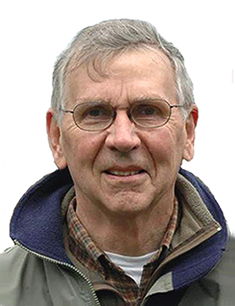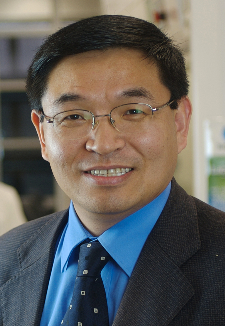The Chinese government conferred its International Science and Technology Cooperation Award to eight foreign scientists for their contributions to China's science and technology development on February 14, 2012.
Among them, Professor Andreas Dress from Germany, Professor Aikichi Iwamoto from Japan, Professor Stephen Porter from USA and Professor G. Q. Max Lu, a Chinese Australian were recommended by Chinese Academy of Sciences (CAS).
Professor Andreas Dress
Professor Dress was the first director of the CAS-MPG Partner Institute for computational Biology (PICB) from 2005 to 2009. He, in cooperation with the Chinese director, has been dedicated to bridging theoretical and experimental work in biology, supplementing the scientific research systems of CAS and MPG, spreading scientific knowledge, fostering talented young scientists and promoting the development of the life sciences.
Under his guidance, the institute focuses on four major research directions: biomathematics, computational genomics, computational protein science and computational system biology, forming a strategic, systematic layout of computational biology research and playing a positive role in promoting discipline development. During his work in Shanghai, the research group headed by him, has made academic contributions recognized by international peers in creating topological proteomics, development of mathematical combination of evolutionary biology, exploring the complex network analysis and optimization, and other scientific research areas.
Professor Dress emphasizes on scientific cooperation and exchanges. In five years, the institute organized a large number of international academic activities, hosted international training courses of computational biology and established long-term cooperation projects and joint graduate training programs with nearly 30 foreign research institutes. As an outstanding scientists, Professor Andreas Dress has made recognized contributions to Chinese scientific research, and enhances friendship between Chinese and foreign scientists.
Professor Aikichi Iwamoto
Professor Aikichi Iwamoto is a Japanese professor who has worked at the Institute of Medical Sciences, University of Tokyo (IMSUT) since 1994. His work focused on basic and clinical research on infectious diseases, especially viral diseases such as HIV/AIDS. He is currently the Chair of the AIDS Surveillance Committee of Japan’s Ministry of Health, Labour and Welfare and a member of the Governing Council of the International AIDS Society (Asia and the Pacific Islands). He was the director of the Institute of Health Sciences, University of Toyko, and the chairman of the Japanese Society for AIDS Research.
Prof. Iwamoto has visited China many times since 2003 and made significant contribution to the establishment of a collaborative agreement between the Chinese Academy of Sciences (CAS) and the University of Tokyo (UT) which laid the foundation for the opening of the Sino-Japanese Joint Laboratory of Structural Virology and Immunology at the CAS Institute of Biophysics, and the Sino-Japanese Joint Laboratory of Molecular Immunology and Molecular Microbiology at the CAS Institute of Microbiology, under the Initiative for Global Research Networks on Infectious Diseases which was sponsored by Japan’s Ministry of Education, Culture, Sports, Science and Technology in 2005. The two joint laboratories, recognized in 2006 by both Japan’s Ministry of Education, Culture, Sports, Science and Technology and China’s Ministry of Science and Technology as Sino-Japanese Intergovernmental S&T Collaboration Projects, have effectively promoted and facilitated research collaboration in the fields of microbiology, immunology and epidemiology over the past five years. In the past five years, the Japanese side has invested about 150 million RMB yuan in the two joint labs, and has sent five Japanese scientists to do research in China. During the same peoriod, several Chinese scientists have been working at the labs in Japan.
In 2010, both the CAS and the UT made a joint commitment to collaborate for another five years. Prof. Iwamoto has also been actively engaged in promoting collaboration between the CAS Beijing Institute of Life Sciences, and IMSUT, thus broadening and extending the scope and scale of bilateral collaborations.
Professor Stephen Porter
 |
Professor Stephen Porter is a well-known scientist from the Quaternary Research Centre of Washington University, USA. He has made a remarkable contribution to research in the field of quaternary geology, especially quaternary glaciology and geomorphology. He was twice elected as the chairman of INQUA between the years 1995-2003. Prior to that, he was the vice chairman of INQUA and editor-in-chief of the Journal of Quaternary Research from 1991-1995. He has published a number of articles in international journals, including Nature and Science. He was also the editor and a major contributor to The Dynamic Earth, An Introduction to Physical Geology, which has been a standard textbook for Geology in the United States and has been reprinted several times. He has obtained numerous awards, including the Benjamin Silliman Award of Yale University in 1962, the Educational Achievement Award of Washington University in 1965, the American Quaternary Association Business Achievement Award in 2004, the Kirk Bryan Award of the Geological Society of America in 2004, and the Career Achievement Award in 2005 by the American Quaternary Association and the Geological Society of America. In 2007, invited by the Chinese Academy of Sciences (CAS), he visited Xi’an and Beijing and gave a series of lectures as a CAS Einstein Professor.
Stephen Porter is a visiting professor of the Chinese Academy of Sciences. He is passionate about research on Chinese loess. In joint research, Prof. Porter and Prof. An Zhisheng were the first to detect the Heinrich event in Chinese loess. They compared this with North Atlantic sediments and raised the possibility of teleconnection with climate, resulting in a theoretical breakthrough in research on regional and global links in dynamics research. He has established good cooperative ties with Chinese scholars over the past years and fostered exchanges and cooperation between Chinese young scientists and their international peers. Many young Chinese Quaternary scientists who have benefited from his guidance are now the backbones of certain research fields and have become major contributors in Chinese Quaternary research.
Professor G. Q. Max Lu
 |
Professor G. Q. Max Lu, a Chinese Australian, is now the deputy vice chancellor of the University of Queensland and the Chair Professor of Nanotechnology. He is a world renowned scholar in nanoporous materials, adsorption and catalysis. He has published more than 400 peer-refereed SCI papers with citations in excess of 8700 (h-factor 47). He became an ISI Highly Cited Researcher (Materials Science) in 2010. In 2002, he was elected as the youngest academician of the Australian Academy of Technological Sciences and Engineering (ATSE), and was appointed as a Federation Fellow of the Australian Research Council, in 2003 and 2008. He served on the working group of experts for the Prime Minister’s Science, Engineering and Innovation Council (PMSEIC) between 2003 and 2005, and currently serves as an ATSE Board member. He has won numerous honors and awards, including being selected twice for the Top 100 Most Influential Engineers in Australia, Inaugural list of the Australian Institution of Engineers (in 2004 and 2010). He also serves as the Editor of the Journal of Colloids and Interface Science and is on the Editorial boards of 12 other international journals.
Professor Lu has established long-term fruitful cooperative ties with several institutes of the Chinese Academy of Sciences (CAS). In particular, he has cooperated closely with the Institute of Metal Research (IMR) and the Dalian Institute of Chemical Physics in the field of clean energy materials and has completed a number of joint international projects, which significantly promoted the development of materials for photocatalysis, energy storage, and green catalysis. He has shown devotion to training young CAS researchers in these areas, and has visited IMR 19 times and co-supervised 10 graduates for PhD and Master’s degrees. Four IMR graduates have conducted research in his group for periods longer than one year. He has also actively facilitated cooperation between the ATSE and the CAS. In 2005, he submitted a report entitled New Energy Materials Progress and Outlook to CAS, which was beneficial in guiding the development of new energy materials. Representing the Australian Academy of Sciences and ATSE, he attended the 4th CAS Forum, and provided much helpful advice on collaborations on clean energy materials.
The awards were conferred at a ceremony held for China's annual national science and technology awards in the Great Hall of the People.
The International Science and Technology Cooperation Award was launched in 1994 by the State Council. Up to 10 foreign individuals and organizations each year can receive the award.

